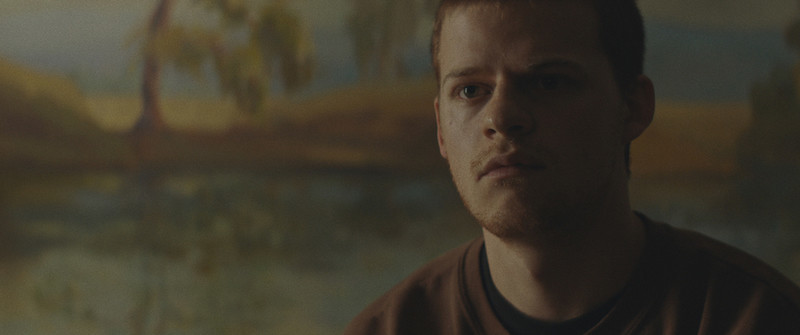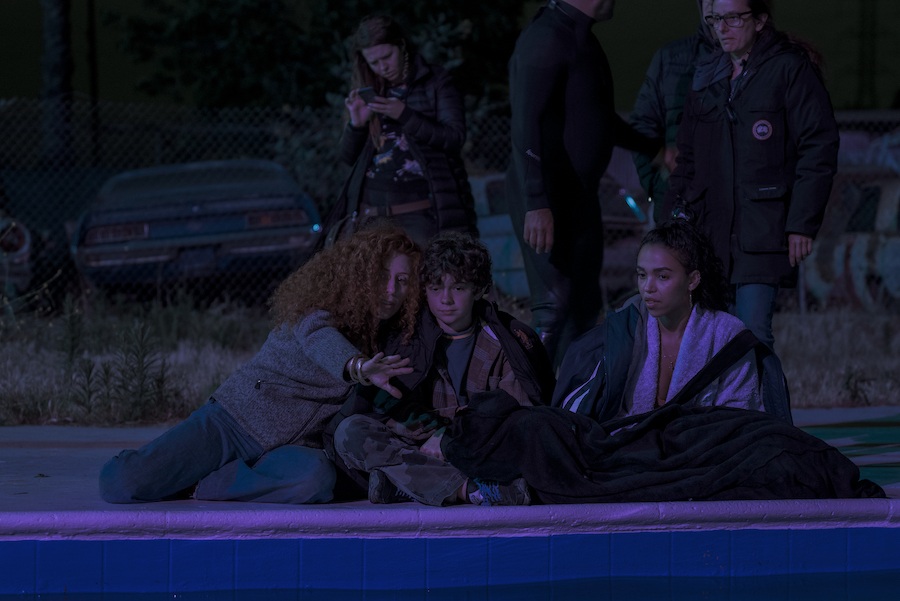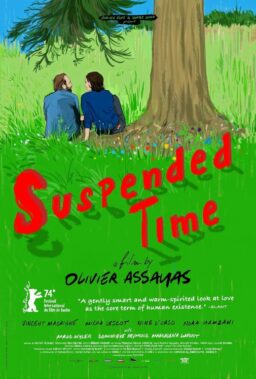“Honey Boy” is a story about revisiting childhood trauma, and concerns the very active therapy of art—looking back at one’s pain and going through it again, harnessing the narrative. The text is provided by Shia LaBeouf, who wrote the script as based on his own experience as a child star with an abusive father, reflecting a part of his upbringing we’d only heard about before. But the vision is all that of director Alma Har'el, who cast LaBeouf to play his own father in the process, while picking Noah Jupe (“A Quiet Place“) to play Otis, the preteen movie star at the center, and Lucas Hedges (“Manchester by the Sea“) to play the older, PTSD-inflicted version of him. Har’el makes her narrative debut with film after having directed documentaries “LoveTrue” and “Bombay Beach,” and brings that experience to a film comprised of raw performances and an electric sense of self-realization.
RogerEbert.com spoke to Harel on the phone about constructing her narrative debut, working with two actors to create one character, the stories she wants to tell next, and more.
How did you work with Shia in his role of playing his own father, and with Noah playing a form of Shia?
There’s not a lot of ways to prepare for something like that. But in terms of making sure it’s a safe space for Noah, that was something that we worked on. We spent all of two months together playing together, really becoming friends and intimate with each other. And I think when Noah stepped into that room, when there were difficult scenes, when Shia was triggered and he fluctuated—there were days where we laughed on set and did eight or nine different takes, and then there were days when we did one or two takes, and it was enough. It was just another approaching each day with the challenges it had, without the thinking that it had to be exactly as it was on the page. That’s something I wanted from the start; I wanted to film it like a documentary, and bring the surface out of the memory.

What’s an example of a scene that was captured with those small amount of takes?
There wasn’t many of them. I think we would normally do seven to twelve takes, and often in the edit I’d edit in between a few takes. [Shia] improvised a lot, and I really wanted to let Shia have freedom and move around the room and not just do the same thing over and over again. It was challenging obviously to [director of photography] Natasha Braier and her team, because I demanded the best of all worlds. I wanted her lighting and something that was stylized, but I really wanted to give the actors a lot of freedom to try a lot of different things.
I always had the trust and the faith that I would know how to edit it. I come from documentary, and you never know where people are going, and I spent four years making films and following people and not knowing if they’re going to hit a mark on the floor, and what they’re going to say next. I always managed to edit them into scenes; documentaries have scenes too, especially my documentaries. I think for somebody like a script supervisor and a cinematographer, who is more used to doing coverage and making sure that everything will cut, I had people worried that I wouldn’t be able to cut it together. Because I’m also an editor, I edited both of my first films, with wonderful editors, I knew that [“Honey Boy”] would cut. It was in the moment that it was kind of very hard to just hold that space, and make sure that we continued to shoot it with that kind of freedom.
There were a few scenes that were obviously traumatic and brought up a lot for Shia, and it was never one-takes, I think the minimum that we had was two takes, or three takes. But the one take that we did was the explosion that opens the film, that was done in one take. But really the performances, we had a minimum of two takes. And I think that I felt comfortable that the performance was so raw, and everyone was crying when we said “cut,” and you just have to trust yourself as a director sometimes, even if everybody is telling you that you need to get another take, that you’re going to be in trouble. You have to trust yourself and your actors, and know that they did it, and that they went where they needed to go. And I just had faith. It wasn’t really a recipe, it was just very different days. A lot of days were full of laughter and dance, and some days were just full of trauma and tears, and it was incredibly challenging to navigate that. But at the same time, I feel like that’s what we set out to do.
How did you create a consistency with Noah Jupe and Lucas Hedges? Is it about going to the real-life text, or building the character together?
Both Noah and Lucas really worked incredibly hard on this film. It was about finding the balance between studying Shia and bringing Otis to life, which Otis isn’t Shia. Otis was somebody that grew out of who Noah and Lucas are. And I think they both, the things that they share, even though they’re different too, their approach to acting and their ease in terms of their definitions of masculinity, are a lot more flexible than what Shia grew up with. I think Shia grew up with certain expectations of what a man is, and that’s something that he explores in this film. And it was really important for me to get Lucas and Noah to study that part of him, and they did. They did that very well.

What kind of LaBeouf footage did Lucas watch?
It was by watching a million videos on YouTube from every age, and watching “Even Stevens” and films of his. What was really striking for Lucas was to watch “Man Down,” because that film is about a soldier that has PTSD. Shia really portrays some of the incredibly challenging aspects of PTSD from paranoia to anger to violence, all of those things in that film—just the way it can trigger somebody to think that the whole world is against them. He was diagnosed with PTSD obviously when we did the film; I know that Lucas used that film a lot to get insight to some of the inner world of Shia. It was a lot of material to work with.
And when the challenge was to also be very economical with the things that we did borrow, even in terms of the voice that Lucas adopted. We worked with a coach, and it was important to me that Lucas and Noah worked with the same coach on their speech. We could show how the speech changed. We worked a lot on the body movement and mannerisms that would go with the character, and they worked together and spent time together and learned each other. It was a lot of preparation, and I think you can see it on the screen.
What stories are you excited to tell next?
I’m excited about discovering what lies outside my father’s pain. I’m very much interested in the mythical and mystical nature of our relationships to people we love, and there is something about the limitation with the medium, and the genre in general, that is always challenging for me. I kind of look forward to playing with those things.
Have you been offered anything like the projects that Otis makes within “Honey Boy”?
I’m being offered a lot of films now, so I’m definitely flattered … I don’t want to say flattered, but I am thankful for the opportunity. But I think I am much more interested in discovering what stories I have to tell.












